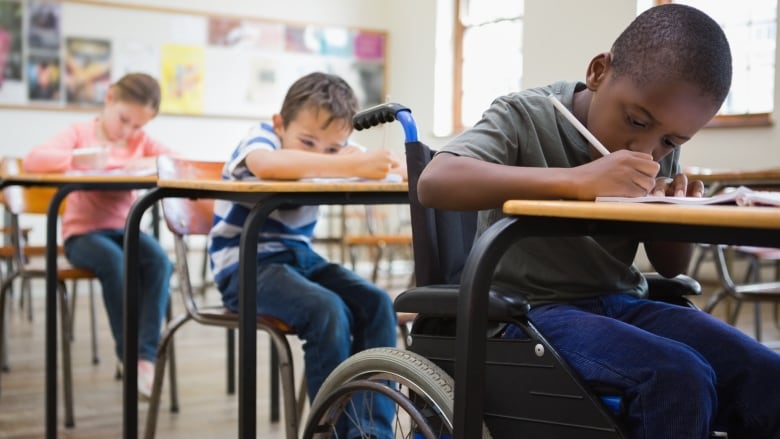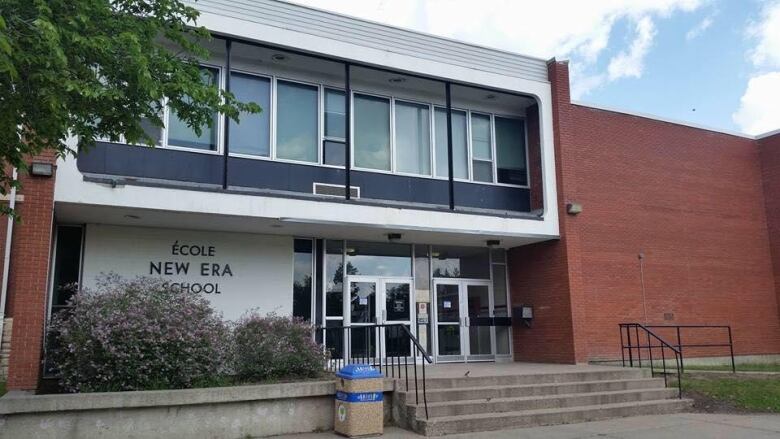Manitoba parents of students with disabilities anxiously awaiting back-to-school details, advocates say
Most divisions to release detailed plans next week

Advocates sayparents are anxiously waiting for more specifics from the Manitoba government and school divisions about what lies ahead for students with intellectual, physical, sensory, emotional or behavioural disabilities when they head back to class in less than a month.
"It's worrisome to me when it's not clearcut to all families," said Janet Forbes, executive director of Inclusion Winnipeg, which advocates on behalf of Manitobans living with intellectual disabilities.
Most Manitoba school divisions were expected to release their individual back-to-school plans this past week or early next.
Advocacy organizations say that leaves little time for parents to prepare their children and arrange contingency plans of their own in the event COVID-19 cases climb and schools are forced to return to remote learning.
"We're only 30 days away from school starting and I know people are really anxious about going back to school and being able to plan and work through all these different scenarios," said David Kron, executive director of the Cerebral Palsy Association of Manitoba.
Provincial recommendations
On Thursday, the province released its own updated guidelines, which require masks to be worn on school buses and "strongly recommend," but don't mandate, the use of masks by students in grades 5-12.
The guidelines also include a section with some recommendations for divisions to take into accountwhen supporting students with special learning needs, some of whom live with co-occurring physical, intellectual or developmental disabilities.
The executive director of Inclusion Westman said parents in Brandonthe site of a COVID-19 cluster that continues to grow are especially nervous about what could happen if students withdisabilitiesare forced to revert to remote learning.
"How do we plan with two weeks left?" said Betina Roberts, president of the Brandon-based group.
"One of the biggest fears of parents is if the school is shut down and everyone remote learns, what happens there?"

She's concerned not only about students losing out on interaction in the school setting, but about how parents would be able to support their children.
"Do they have respite so that they can continue to work? Because right now, they wouldn't have respite dollars for that. Does the children's disability services through the province [plan to] fund to have someone at home with this child?"
Roberts said Inclusion Westman has met with Brandon School Division officials to relay some of these questions.
She said the division appeared to take concerns seriously and is doing what it can to ensure a safe and accessible learning environment is in place come fall.
A division official previously assured the group thatthe priority would be to keep students with disabilities in school if COVID-19 worsened and forced the majority of other students to learn remotely, Roberts said.
Clarifying role of EAs, support staff
While the province has issued general guidelines for schools, many of the specifics for the return to in-class learning have been left to individual school divisions.
But Forbes and Robertsstressed the importance of clarifying the role of educational assistantsacross the board, given that some students require one-on-one support and close contact throughout the day.
"It varies from division to division, and likely from classroom to classroom," Forbes said in a statement. "All efforts must be made to ensure inclusive education."
She asked whether support workers and EAswho work very closely with students with special needs will have adequate access to personal protective equipment.
On Thursday, the province said it will be mass-buying masks and other PPE for school divisions.
If [an educational assistant] does become sick,where is this pool of people as a replacement?- Betina Roberts, Inclusion Westman
The province also recommended in June that support staff wear disposable gloves when helping such students go to the bathroom or during other hygiene practices. Depending on the individual, masks or face shields should be worn when distancing isn't possible, the province says.
Roberts said EAsare processing their own health concerns.
"You're still going to be hanging on to that child if they require thattight contact, you're still going to be assisting in personal hygiene at school and toileting and such, and that's just your job," she said.
"And thenif someone does become sick,where is this pool of people as a replacement?"
The province's guidelines also say divisions shouldsupport "medically fragile students" and their return to school through consultation with health authorities on any new risk factors, as well as by offering staff training and continuing remote learning in cases when a return isn't feasible.
Key factors
Forbes said key requirements Inclusion Winnipeg expects at the division level include ensuring students with disabilities have access to appropriate technology, like augmentative communication, and greater access to therapists.
Access to sign-language interpretation should also be available in the event teachers wear masks and students who lip read can no longer follow along, she said.
She also suggested a number ofgeneral recommendations in the Manitoba back-to-school guidelines might not work for everyone.
Provincial guidelines discourage the sharing of sports and recreation gear, but Forbes said some students with disabilities may need to share mobility or other support equipment.
The back-to-school guidelines also mention the possibility of staggered start times as a means of avoiding crowding in school drop-off zones and entrances. Forbes suggested that could prove challenging for students reliant on accessible transportation options.
I just pray that the answer is just not to send the person home from school because they can't take care of [them] anymore.- David Kron, Cerebral Palsy Association of Manitoba
The province also recommends divisions consider creating "congregated classrooms" for students' special learning needs to offer regulartimetabling.
But Forbes said students with disabilitiesshouldn't be grouped together in their own cohorts, as physical movement may be more essential to some students than others.
The Cerebral Palsy Association's Kron hopes divisions are mindful of this as well.
"We don't [want to] stigmatize or put folks with special needs in a different spot than regular classes," he said.
He hopes that the unique needs of students are prioritized in whateverdivision-specific plans do come out.
"One overall plan is not going to work for everybody, and I get that," he said.
"I just hope that it's properly resourced, so that the solutions are out there and that we'll be able to do it. I just pray that the answer is just not to send the person home from school because they can't take care of [them] anymore."












_(720p).jpg)


 OFFICIAL HD MUSIC VIDEO.jpg)
.jpg)



























































































